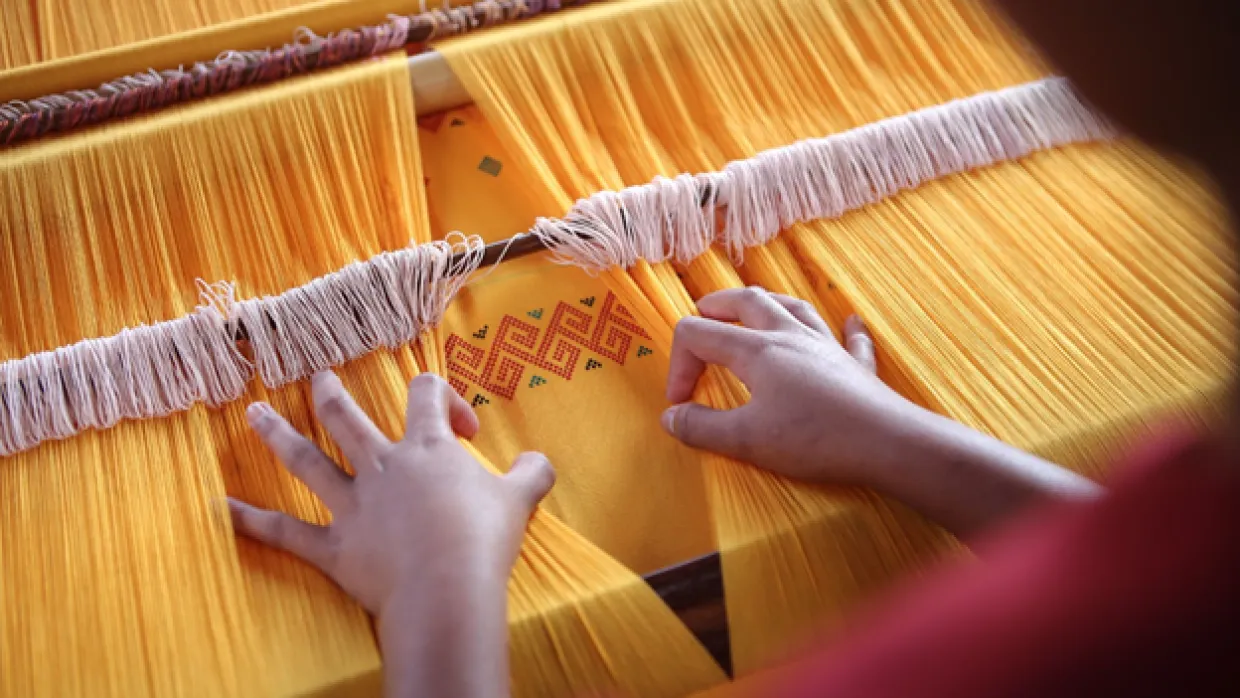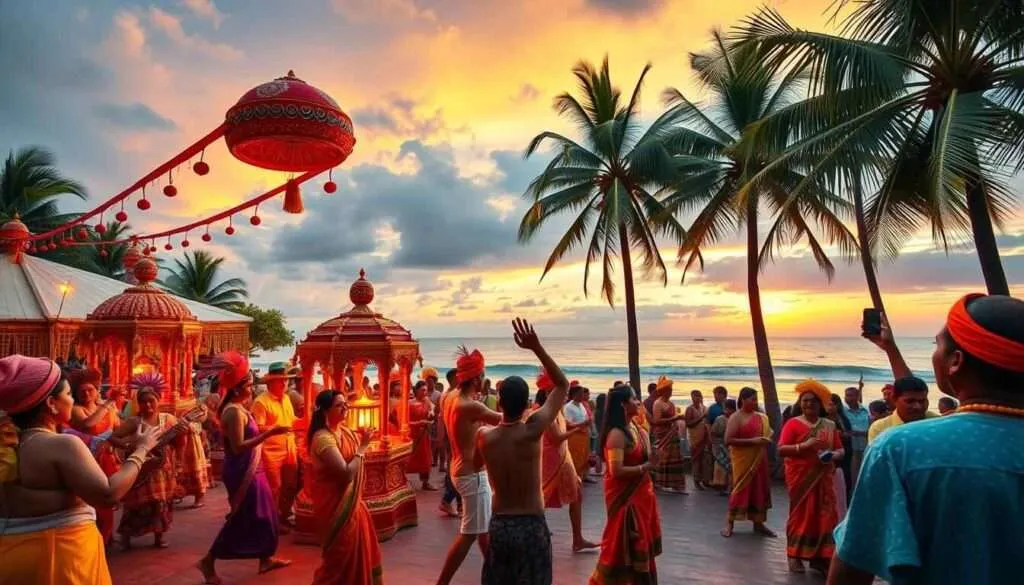1. The First Layers of Sawan Arrive Quietly
In early August, monsoon rain cools the hot breeze. The air feels clean. You might enter a temple and catch a faint hum of “Om Namah Shivaya”, or walk down a lane and see a small pile of fresh bilva leaves tied string-bare by temple doors.
That’s the moment Sawan begins—not with fireworks, but an internal shift. You notice you walk slower. A breath feels deeper. That subtle shift is Shiva’s invitation to slow down. In 2025, that invitation began in the last week of July and stretches into September
2. Why Sawan Is Special for Shiva Devotees
- Mondays (Somvar) are sacred. Devotees fast or meditate. Many light oil lamps at temples before sunrise.
- Rain and rebirth: Shiva cleanses our souls as the ground pours, a metaphor that deepens devotion.
- No large fireworks necessary—just the quiet unfolding of worship and reflection.
Sawan is not dramatic; it is transformative—one quiet step at a time.
3. Weeks of Growing Reverence
Week One: Setting the Quiet Foundation
- Place a small lamp or diya next to a miniature Shiv Lingam or a picture of Shiva.
Week Two: First Monday Fast
- Many start with a light fast—banana, coconut water, or ankle beans.
- Offer water, milk, or a few rose petals to your deity spot.
- Whisper a short prayer under your breath: no lengthy mantra required—honesty over length.
Week Three: Small Acts, Big Heartfelt Growth
- Attend or stream a local bhajan session.
- Share a bilva leaf with a friend or neighbor after your midday prayer.
- Teach a kid to rinse the puja plate gently under the tap—small respect for ritual items.
Week Four: Silent, Steady, Stray-off-the-path Moments
- By now, your body and mind may crave only light meals.
- You might offer milk with turmeric to the Lingam just after dawn.
- Midday you may pause for five minutes with closed eyes, spelling out “ ” internally.
4. Everyday Rituals That Still Feel Sacred
- Bilva offering: Simply place a leaf atop the Lingam, say a line, and relax.
- Water abhishekam: Gently drizzle a tiny cup over the picture.
- Lighting a lamp: Even if it’s oil/diya or LED—your care is the offering.
- Mental chant: Not loud. Just quiet. A few deep breaths with intention.
No need for fancy puja items. Connection matters more than perfection.
5. Food During Sawan: Simple & Respectful
Basic meal ideas:
- Breakfast consists of a little date or banana and coconut water.
- Lunch: curd rice or khichdi with smooth, unspiced dal
- Evening snack: boiled peanuts or soaked almonds
- After sunset: one sweet (like a jaggery laddu) or fruit
Fasting isn’t about deprivation; it’s about inward alignment. And Sawan work: less flavor, more clarity.
6. Two Personal Anecdotes I’ll Never Forget
A. Temple Dawn Footfall
I once reached the small Ganpeshwar temple by 5AM. A hush. Only two other worshippers. The priest dripped milk slowly. You could hear each drop of land. I let my breath settle. That silence taught me more about devotion than any crowded puja hall.
B. Rainleaves and Bhajan Hotline
Another memory: One evening, the power cut out. Neighbors lit candles. Someone started singing “Shiv Manas Bhajan” on a phone loudspeaker. It felt like devotion itself can light us, not electricity.
7. Sawan as a Family Experience
- Parents tell stories of Shiva killing demons with pride and compassion.
- Kids scribble Shiva’s trident or Nandi bull in their notebooks.
- Elder siblings share memories of “walking to the far temple in college.”
- Grandparents occasionally offer their “lucky naan or coconut,” saying quietly: “I’ve carried these rituals since childhood.”
And even when the day is loud and busy, these small acts carry generational devotion forward.
8. Regional Variations: How India Practices Sawan
- In North India, people offer panchagavya (milk, curd, ghee, clarified butter, and honey) to Shiva.
- In South India, Nandi statues get milk baths and coconut water enthusiasts.
- In East India, small bilateral prayer groups share kund (holy drinking) ceremonies.
- Common: Three-lobed bilva leaf, incense, chanting, water offerings—diverse traditions embracing the same spirit.
Sawan brings Christians together with simplicity and reverence, regardless of where you live.
9. EcoMindful Practices for Sawan 2025
- Use fresh leaves instead of plastic garlands.
- Use solar or LED lights with reverence instead of big metal or oil lamps.
- Do not wash idols in ponds—even plants appreciate temple water.
- Offer leftover prasad to neighbors or stray birds after 3–4 hours.
It’s not necessary but deeply respectful—in 2025, more devotees made these choices quietly.
10. Community Rituals and Quiet Offerings
- Street temples or Sawan Samiti groups often hold early sunrise water offers.
- Some host chakki (flour mill) roasting sessions for fasting snacks.
- Community bhajans happen without much pomp, just candles and shared voices.
- People donate blankets and food quietly to help temple volunteers during rain.
It’s devotion plus empathy—and that amplifies spirituality without show.
11. Final Monday: A Quiet Farewell
By the last Monday of Sawan:
- Fasting may feel easier. Mental clarity is more visible.
- Offer final abhishekam or flower offering at dusk.
- Share a small prasad. Man whisper, “Thank you, it was a good month.”
There’s no big procession—just silent gratitude.
That night, you sleep calmer.
12. Quick Guide: Your Path Through 2025 Sawan
- Week 1: Setup, intention, minimal fast
- Week 2: Prayer, a modest act of charity, and the first real fast
- Week 3: Bhajan or temple visit, community connection
- Week 4: Milk offering, reflective fasting, silent gratitude
- Post-Sawan: Light lamp, maybe learn more about Shiva or meditation
13. Why Sawan Still Speaks to Many
- It’s non-commercial: no ads, no banners.
- It builds inner habit: a chant becomes your stress reliever.
- It deepens family connection through shared meals and worship.
- It’s respectful: even if you miss one Monday, you continue quietly.
- Its pause-in-chaos quality is rare and healing.
In a world full of noise, Sawan teaches calm.
14. Sawan Blessing Blesses You Back
A final thought: when the priest touches oil to your palms and whispers, “Shiva bless you,” you feel carried. Not because of gold or grandeur, but because the moment asked you to give quietly—and Shiva gave back.
May you experience that warmth in Sawan 2025—a month that whispers peace and presence to your heart.
Om Namah Shivaya. May spiritual calm find you this season.













